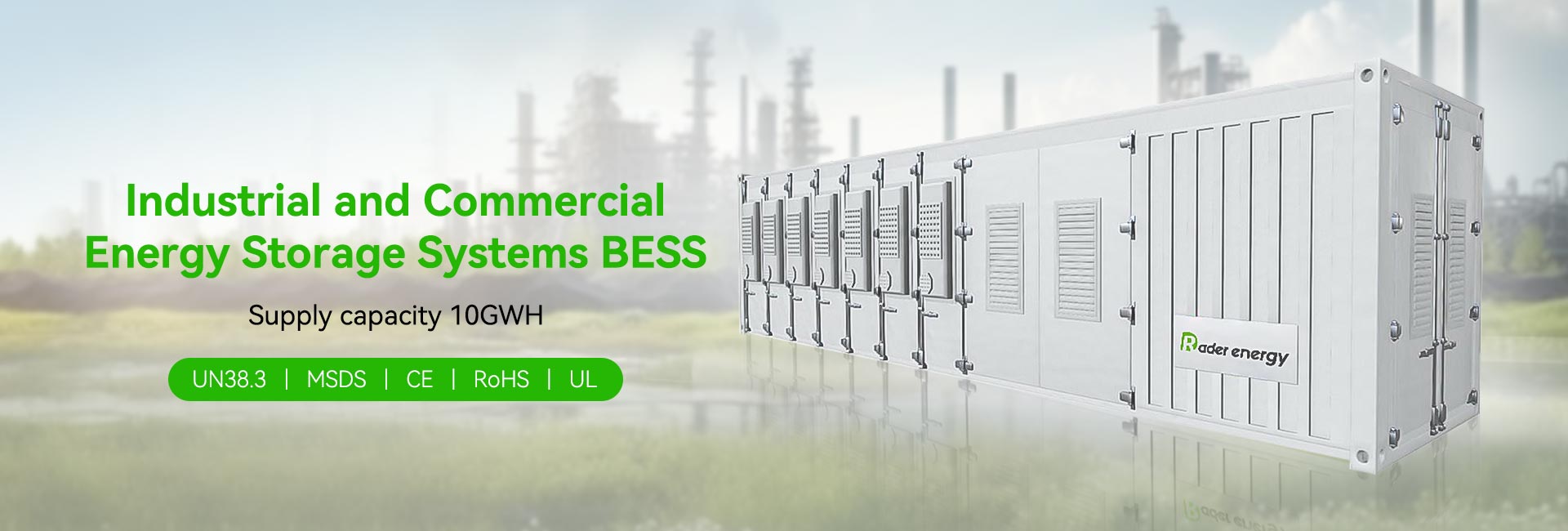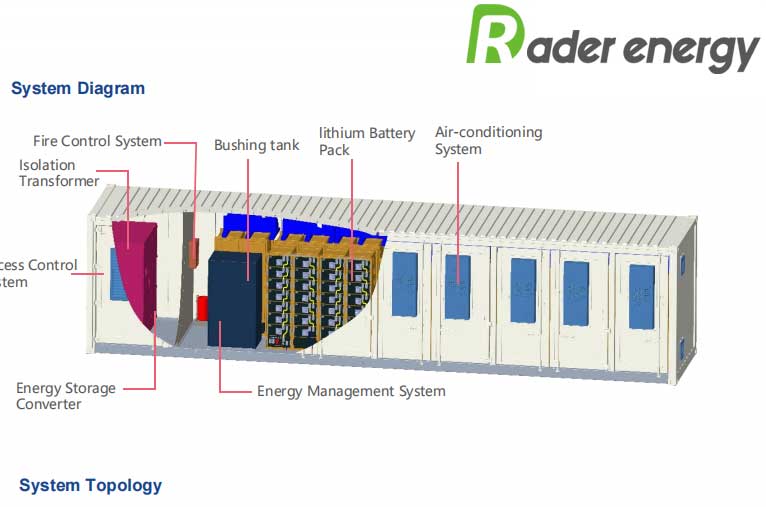
At its core, a Battery Energy Storage System (BESS) is an energy storage solution comprised of large-scale batteries housed within containers. It stores and releases electricity on demand, serving as a buffer between renewable energy sources – which generate power only when sunlight is ample or winds are strong – and the grid. This ensures a dependable, stable power supply while offering affordable, low-carbon electricity.
The BESS plays a vital role in integrating renewable energy into the grid, enabling us to harness solar energy by day and wind power at night, providing consistent power to homes and businesses. It's a game-changer for smoothing out the inconsistencies of renewable production, enhancing grid resiliency, and promoting a cleaner, more sustainable energy mix.
The backbone of BESS operations lies in its Energy Management System (EMS), intelligently regulating charge and discharge cycles. The EMS forecasts daily energy prices, generation, demand, and battery status, optimizing BESS function accordingly. It fine-tunes operations based on energy needs, tariffs, and battery levels, ensuring efficient storage and distribution. This isn't standard for typical storage; "smart battery software employs algorithms to enhance energy production, using computer controls to dictate storage or grid release times" – all tailored to regional grid regulations.
The hardware components of a BESS (Battery Energy Storage System) encompass the physical infrastructure for storing and releasing energy, primarily comprising:
A single battery is the core of the BESS system, storing electrical energy through electrochemical reactions. These batteries are typically composed of lithium-ion batteries due to their high energy density and long lifespan.
Batteries are combined into modules to achieve the desired energy capacity and power output. Each module contains a certain number of batteries connected in parallel and series to maximize system performance.
To meet specific application requirements, modules are further integrated into larger battery packs. Battery packs combine multiple modules to achieve the desired energy capacity and power output.
The PCS is responsible for converting the DC voltage from the batteries into AC voltage compatible with the grid or other loads. It ensures efficient energy transfer between the batteries and external electrical systems.
The software components of traditional BESS systems control the operation of hardware and optimize system performance. These components include:
The BMS monitors and manages the health and performance of the batteries. It ensures safe and efficient operation of the batteries, preventing overcharging, overdischarging, and other potential hazards.
The EMS optimizes the operation of BESS, taking into account factors such as grid conditions, energy prices, and user preferences. It determines the best charging and discharging strategies to maximize system value and reduce costs.
The GMS facilitates the interaction between BESS and the grid. It ensures that BESS operates in synchronization with the grid, providing stability and ancillary services.
These systems collect and analyze data from BESS and external systems, providing valuable insights into system performance, energy consumption trends, and potential issues. This data is used for system optimization, maintenance planning, and regulatory compliance.

Battery Energy Storage Systems (BESS) play a pivotal role in various business sectors, spanning commercial and grid-scale applications to address specific energy needs and challenges.
Commercial Sector
In the commercial sector, businesses deploy BESS for various purposes. A key application is load shifting for on-site generation, where batteries are charged during surplus solar or wind power and discharged later in the day to reduce grid input. Additionally, BESS is often used for peak shaving, reducing electricity usage during peak demand periods to lower energy costs. Furthermore, BESS facilitates load leveling, smoothing out energy consumption throughout the day for businesses, optimizing energy usage and reducing grid stress. This is achieved through innovative smart charging capabilities, charging during periods of grid renewable energy surplus and low prices, and discharging during shortages or higher prices.
Industrial Sector
For industrial applications, BESS plays a crucial role in energy conservation, emission reduction, and grid stability. It ensures stable power supply and mitigates the intermittency of renewable energy sources. Additionally, it promotes the integration of renewable energy into industrial sectors, supporting the transition of industrial processes towards more sustainable directions and reducing carbon emissions.
Grid-Scale Applications
At the grid-scale level, Front-of-Meter (FoM) BESS is essential for ensuring a stable and reliable energy system through grid support services. It helps address the challenges of renewable energy intermittency, balancing power supply and demand. By storing excess power generated during renewable energy peaks and releasing it during peak demand or low renewable generation, BESS ensures grid stability and reliability. This not only supports the integration of more renewable energy into the grid but also enhances the overall efficiency and resilience of the national grid.
The implementation of Battery Energy Storage Systems (BESS) brings numerous benefits, significantly impacting the energy sector and broader socioeconomic landscapes.
Cost Savings
A significant advantage of BESS for businesses is its ability to significantly reduce costs, primarily through effective load shifting. This strategy involves purchasing power at low prices and storing it for use during peak demand periods when electricity prices are higher. This not only reduces electricity bills by selling stored power at higher rates, but also aligns with the core benefits of load shifting in a market environment.
Additionally, BESS facilitates peak shaving, which is crucial in minimizing peak kilowatt (kW) consumption in the market. This helps businesses avoid additional charges from the grid or Distribution Network Operator (DNO). Furthermore, companies utilizing renewable energy sources like solar or wind can store excess generated power, reducing their reliance on the grid and further reducing energy costs.
Carbon Emission Reduction
For businesses committed to sustainable development and reducing carbon emissions, BESS serves as a crucial driver. By optimizing the use of renewable energy, businesses can reduce their dependence on fossil fuels, thus reducing greenhouse gas emissions. This not only contributes to achieving internal sustainable development goals, but also aligns with broader national and global environmental targets. Additionally, demonstrating a commitment to sustainable practices can enhance a company's reputation, attracting environmentally-conscious consumers and investors.
Energy Security
BESS provides businesses with greater energy price security and independence. In an era of volatile energy prices and potential grid instability, having a dedicated energy storage system means businesses can maintain operations during price spikes or grid failures. This is particularly crucial for industries where continuous power supply is vital, such as manufacturing, healthcare, and data centers. The ability to store and access their own power supply reduces a business's vulnerability to external energy disruptions, ensuring operational continuity.
Challenges in Implementing BESS
Despite the numerous benefits of BESS, there are some challenges and considerations to address during effective implementation.
Technical Challenges
One of the primary technical challenges is battery lifespan, efficiency, and performance degradation. As a result of repeated charging and discharging cycles, battery systems experience reduced efficiency over time, leading to decreased storage capacity and effectiveness. This performance degradation factor requires careful management by experienced experts and integrated software. Different battery types may exhibit significant performance differences under different environmental conditions, requiring careful selection based on specific use cases.
Economic Considerations
The initial investment in BESS can be significant. Costs include not only the batteries themselves but also related hardware, installation, and integration into existing power systems. While cost savings and benefits can be realized in the long run, the upfront cost may be a significant barrier for many businesses and residential users.
Regulatory and Policy Environment
Navigating the regulatory and policy environment is another challenge. Policies related to energy storage, grid integration, and renewable energy subsidies are constantly evolving. To successfully implement BESS, it is crucial to stay informed about these regulations and ensure compliance. Furthermore, policies can significantly influence the economic viability of investing in BESS, thus influencing decisions made by businesses and individuals.
Choosing between single-phase and three-phase po
"Revolutionizing energy storage, advancements in
Here is an introduction to one of the best batte
Contact: Thomas
Phone: +8618025306280
Tel: +86-0755-32872175
Email: hello@raderenergy.com
Add: Block A, Ketujia Building, Fucheng Street, Longhua District, Shenzhen, PRC